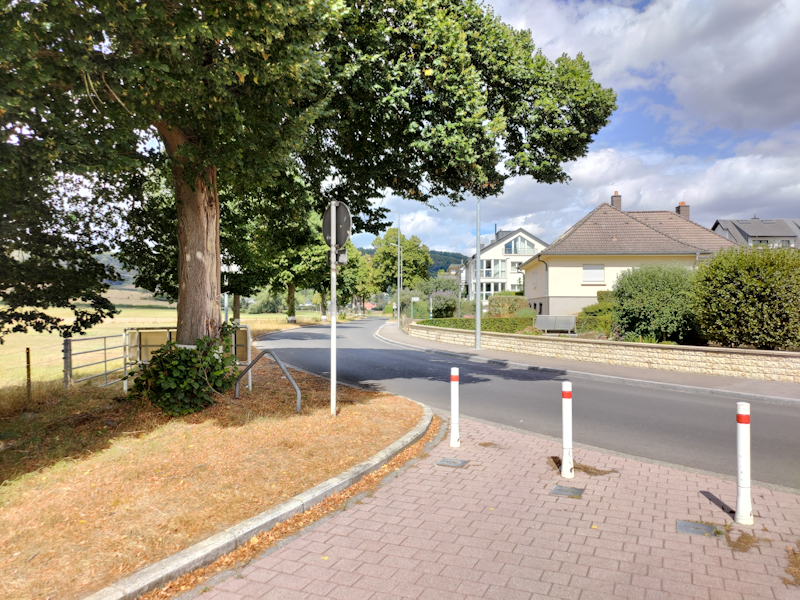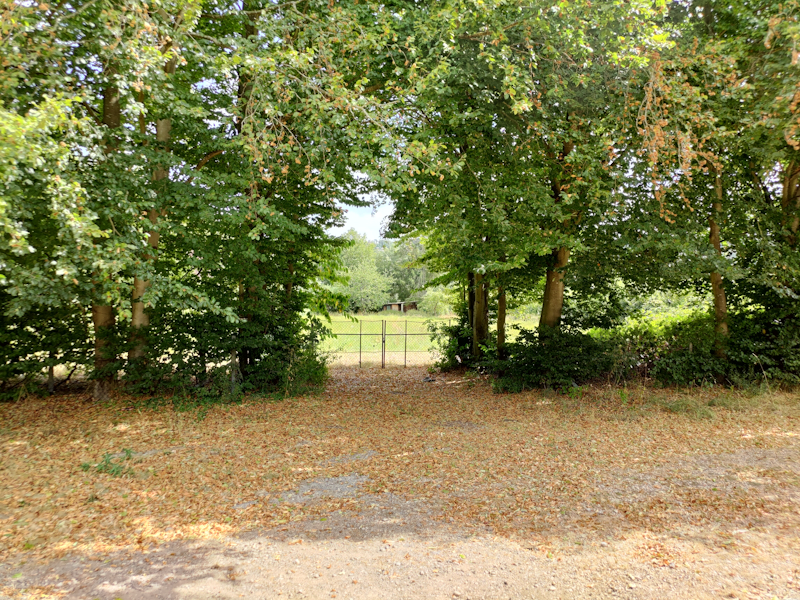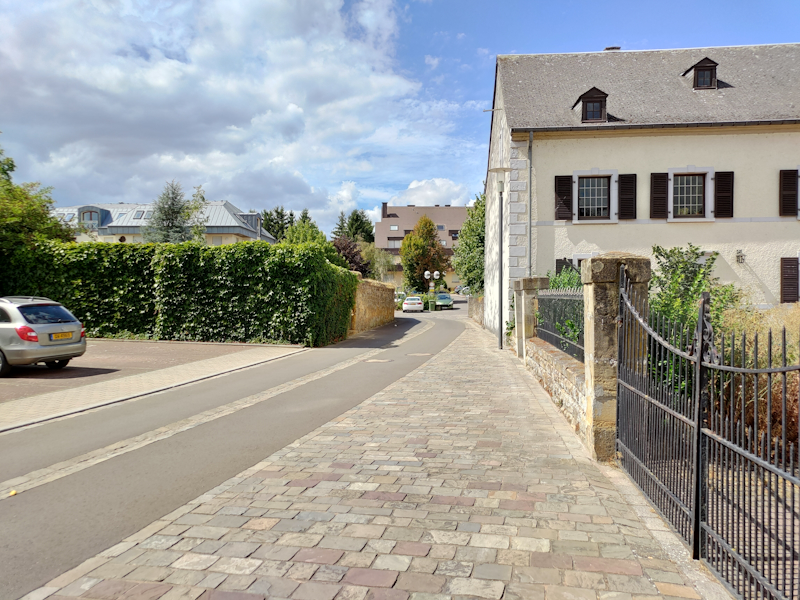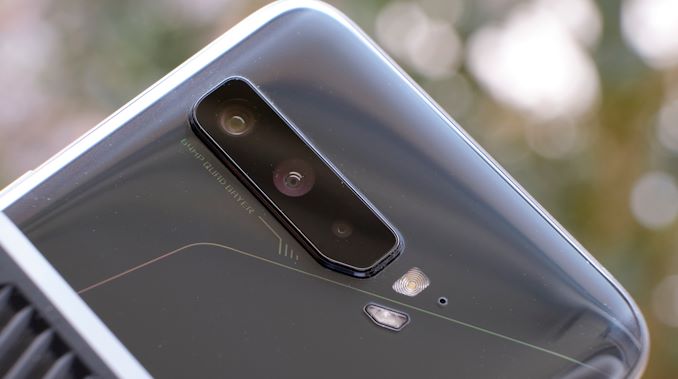The ASUS ROG Phone III Review: A 144Hz 6000mAh Beast With Caveats
by Andrei Frumusanu on August 28, 2020 9:00 AM EST- Posted in
- Mobile
- Smartphones
- Snapdragon 865
- ROG Phone III
Camera - Daylight Evaluation
The cameras of the ROG Phone III aren’t the most exciting, but do represent a partial upgrade compared to its predecessor. The new 64MP IMX686 main camera sensor with its f/1.7 optics are certain to produce higher-quality images. The ultra-wide-angle seems to be the same unit as on the ROG Phone II, however we do hope that the improved processing of the new SoC will be able to improve the quality of the images.
The only rather obvious lacking feature here is the missing OIS on the main camera sensor. For daylight shots this shouldn’t be too much of an issue, but for low-light it’ll certainly handicap the ROG3. Let’s start with daylight shots though:

[ ROG Phone III ]
[ iPhone 11 Pro ] - [ Galaxy S20+(E) ]
[ Pixel 4 ] - [ X-T30 ]
In the first shot here we’re seeing the ROG3 having a quite different exposure compared to other phones. While other phones were exposing for the highlights of the scene, the ASUS exposed for the shadows, and thus has a lot more retention into the darker areas of the scene such as the tree crown. Unfortunately, that doesn’t work too great for the brighter parts of the scene as things look quite flat and crushed due to the HDR trying to reduce highlights back to normal levels.
The ultra-wide has similar issues, with good shadows, however the highlights are too flat and crushed.

[ ROG Phone III ]
[ iPhone 11 Pro ] - [ Galaxy S20+(E) ]
[ Pixel 4 ] - [ X-T30 ]
This scene’s exposure is quite good on the ROG3, though it doesn’t have the best dynamic range. Colour temperature is also too warm, but that’s an issue all the phones had here, except for the iPhone which was more spot-on.
It’s a detail rich-scene and a perfect spot to investigate the resolution of the cameras. The ROG3 doesn’t do well at all there – although the centre of the image is quite sharp, starting in the mid-frame there’s a vast drop in optical resolution resulting in quite abysmal blur towards the edges of the image, which is amongst the worst we’ve seen in a phone. It looks like the optics of the ROG3 are quite bad.

[ ROG Phone III ]
[ iPhone 11 Pro ] - [ Galaxy S20+(E) ]
[ Pixel 4 ] - [ X-T30 ]
In the next shot the exposure is again adequate, but still a bit too flat for the highlights of the scene, as its textures are a bit flat. Even in the thumbnail view we can see the low edge sharpness of the camera versus the other phones which is quite a pity.
The ultra-wide is also dominated by this overexposure and flat highlight elements, it’s notably worse than the competition.

[ ROG Phone III ]
[ iPhone 11 Pro ] - [ Galaxy S20+(E) ]
[ Pixel 4 ] - [ X-T30 ]
In what I guess is less stringent lighting, the ROG3 does a better overall exposure, although this time we see a lack of dynamic range in the shadows, which are clipping to black.

[ ROG Phone III ]
[ iPhone 11 Pro ] - [ Galaxy S20+(E) ]
[ Pixel 4 ] - [ X-T30 ]
This shot is quite nice for the ASUS, although it lacks dynamic range compared to the other phones. Colour temperature is a bit too warm.

[ ROG Phone III ]
[ iPhone 11 Pro ] - [ Galaxy S20+(E) ]
[ Pixel 4 ] - [ X-T30 ]
Under cloud-cover, the exposure ended up being quite dark as the phone tries to expose for the sky rather than for the majority of the scene, which lacked in any kind of highlights.
The ultra-wide here did a better job, resulting in a livelier and more accurate image.

[ ROG Phone III ]
[ iPhone 11 Pro ] - [ Galaxy S20+(E) ]
[ Pixel 4 ] - [ X-T30 ]
Finally, when back in sunlight, the camera again overexposed things and attempted to recover the highlights by lowering them, resulting in flat textures without contrast.
Overall Daylight Capture – Disappointing
The ROG Phone II last year didn’t have a great camera, and it seems to me the ROG Phone III doesn’t improve the situation much even though it sports new hardware.
The issue seems to be solely on the processing side. The phone in daylight has a tendency to overexpose, with the HDR then trying to lower highlights back to normal levels, which then result into flat textures.
It’s a functional camera, but I can’t say that it’s able to compete with any other flagship phone in the market as pretty much almost everything else out there will be able to produce better images.
Hardware-wise, the optics of the main camera sensor are also severely lacking. There’s a very gross loss of optical acuity starting mid-frame, with very blurry edges. The optics here don’t seem to be able to actually be fit for an f/1.7 aperture at all.











71 Comments
View All Comments
Medstar1 - Saturday, August 29, 2020 - link
Personally I've never given wireless audio a try. I was first introduced to the Quad DAC on my LG V20 years ago and it made the headphone jack a part of my "must have" list for phones every since. Another reason may be the fact that when I listen to music I am stationary and not engaged in other activities. I don't listen to music when I'm out, say hiking, because it kind of nullifys the point of being out in nature. I don't do it while I'm out and about in the city because I want to be situationally aware of my surroundings at all times. So bottom line I just haven't found the need to go wireless at this stage.habs01 - Saturday, August 29, 2020 - link
Having a 3.5mm jack doesn't prevent you from using bluetooth if that's what you like. It doesn't work the other way around.flyingpants265 - Sunday, August 30, 2020 - link
You've given in to the inconvenience of Bluetooth, you mean.And you've given into the cost.
Red john - Sunday, August 30, 2020 - link
The problem of wireless headset means you are required to charge a new gadget along with your mobile phone. And we can get better audio quality output with half of the price in wired than wireless headsetsflyingpants265 - Sunday, August 30, 2020 - link
Not required. You can use USBC headphones. Just strongly encouraged by marketing.s.yu - Wednesday, September 2, 2020 - link
Required if you use magnetic charging cables, because your sole C port will be stuck with a magnetic adaptor in it.. And those sell pretty well, the market is expanding in fact.s.yu - Wednesday, September 2, 2020 - link
I can tell you that Sony's flagship overear is sorely inadequate and PHA55BT doesn't drive low impedance CIEMs as well as my phone with its integrated DAC through the 3.5mm. No BT earphone/headphone is known to surpass the former and no adaptor is known to surpass the latter. End of discussion.hemedans - Friday, August 28, 2020 - link
it has two usb type C ports, use one for wired type c earphoneLord of the Bored - Saturday, August 29, 2020 - link
But I want to use normal headphones, not my GBA SP toy phones.flyingpants265 - Sunday, August 30, 2020 - link
So buy an adapter to carry around everywhere and degrade your sound quality (noise etc from contacts/soldering/bad shielding)Remember to pay for that too.